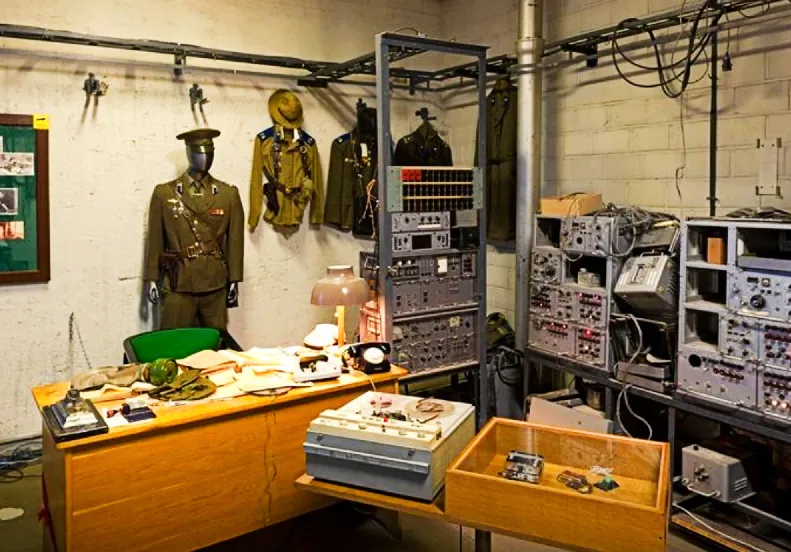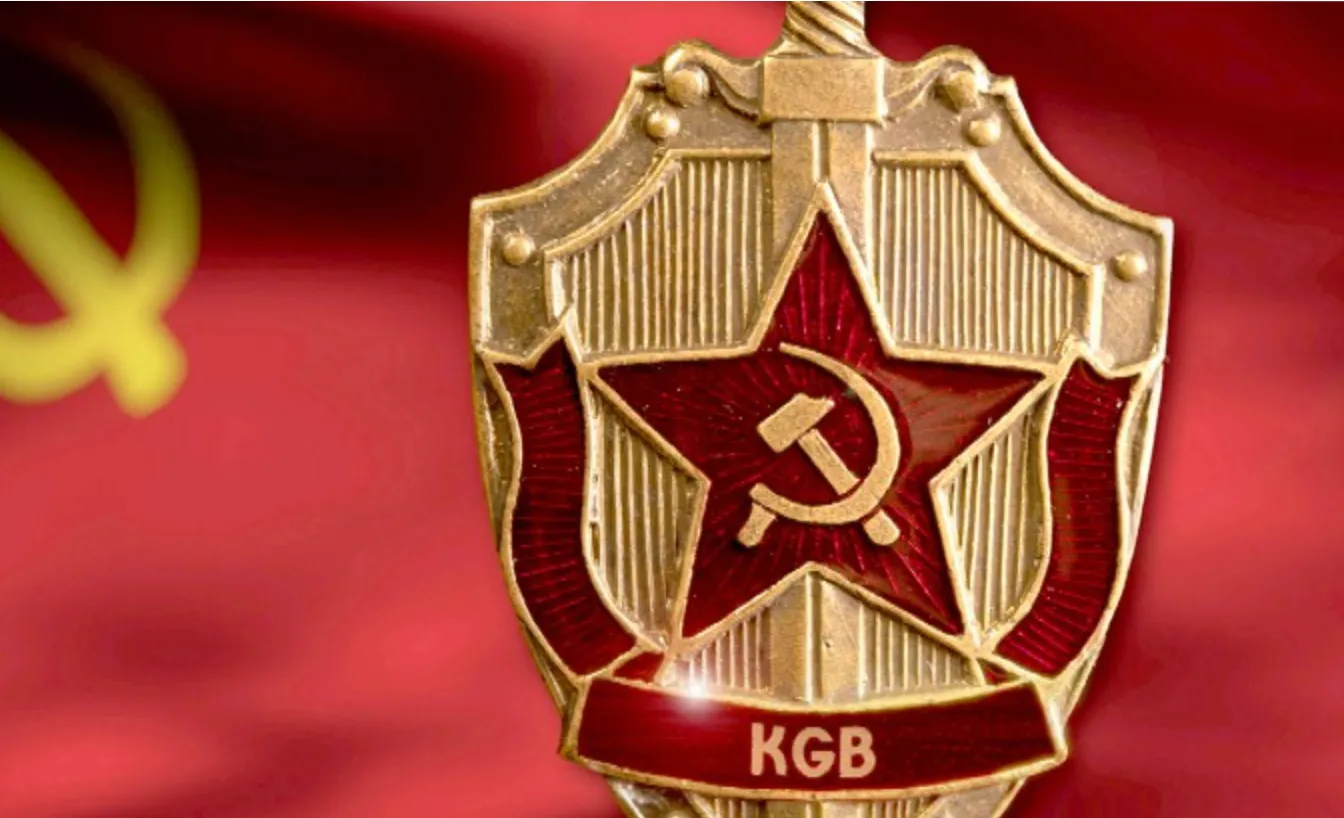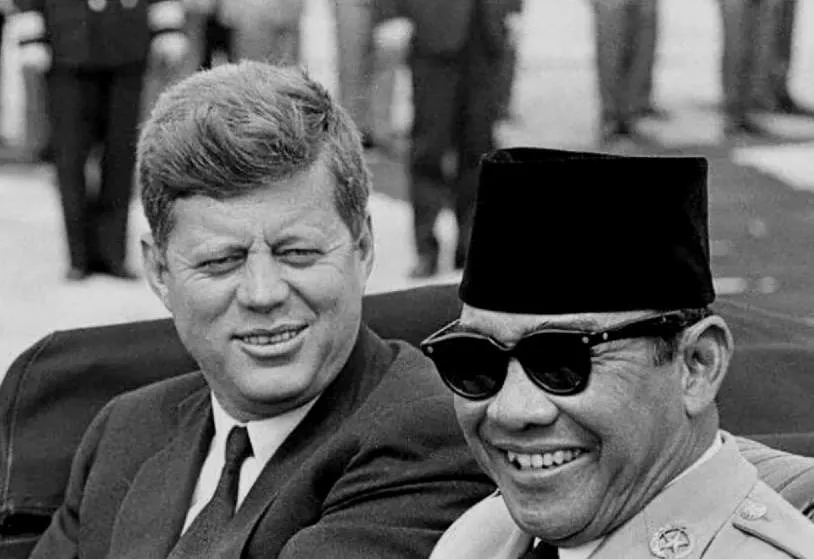Kompromat: A Saucy Century of Blackmail and Spy Scandals
Russia has a history of leveraging compromising photos, videos, and intelligence to its advantage, and the secret spy dossiers cover much more than what may or may not have happened in Donald Trump’s Moscow hotel room.

Kompromat hotels
The Viru Hotel in Tallinn, Estonia was once a crown jewel in the official Soviet Intourist hotel chain in the ‘70s, a slick high-rise block with luxury facilities for foreign guests and a secret KGB listening post perched on the hotel’s 23rd floor (officially there were only 22 floors).
The KGB control center, discovered in the ‘90s after the fall of the Soviet Union, can still be accessed through a stairway leading to a hidden room where surveillance teams bugged 60 of the 423 rooms. Foreign businessmen and their female guests were recorded using spy cameras burrowed deep into holes in the hotel walls.

Downstairs, the sauna was also bugged to record compromising conversations, as was the second floor's cocktail bar. The restaurant too had built-in microphones - heavy ashtrays, flower pots, and bread plates groaned under the weight of listening devices.
Finnish businessmen were favorite KGB targets as they flitted between east and west. A little kompromat - incriminating photos or other evidence damning an unfaithful husband - could go a long way toward persuading Finns to support Soviet policies.

KGB kompromat targets
Hotel Viru was eventually sold to a Finnish chain that now operates the 23rd floor as a KGB museum. The technology - and even the gas masks - are exactly as they were left, according to a tour guide.
Cigarette butts still overflow in ashtrays and a door sign discourages uninvited visitors: Zdes' Nichevo Nyet - ‘There Is Nothing Here.’
The Viru was hardly alone in its clandestine endeavors. Kompromat had proven to be a flexible device for blackmail, character assassination, and protecting government secrets since at least the Stalin era and remains a useful tool a century later.
"The brand new social experience where you activate your gaming skills as you train like a spy."
- TimeOut
Take on thrilling, high-energy espionage challenges across different game zones.


KGB spies: A history of kompromat
Among the KGB’s earliest targets was American columnist Joseph Alsop, a Harvard grad who visited Moscow in the ‘50s. According to journalist Evan Thomas: "Alsop foolishly allowed himself to be caught in a honey trap by the KGB on a trip to Moscow in 1957." The Russians took photos of Alsop at an intimate moment with a KGB agent and tried to blackmail him into becoming an agent. Alsop later discovered his photographs had landed in the hands of FBI director J. Edgar Hoover.
Jeremy Wolfenden, a British spy and London Daily Telegraph correspondent, was also photographed by the KGB having sex with a man. He reported his indiscretion to the British Embassy who pressurised Wolfenden to become a double agent. Wolfenden’s life of lies came to an end when he died of suspected liver failure aged 31.
Sir Geoffrey Harrison, a former British ambassador to Moscow, confessed that he too was lured by Soviet secret police into an affair with a chambermaid at his Embassy in 1968: “It is happening all the time to diplomats and journalists, even to politicians,” he later told The Sunday Times. “If you are on a long tour abroad then your defenses can drop. It's unforgivable, but it happens.”
Maj. James Holbrook, an American military attache in Moscow, was the victim of a similar KGB plot. Holbrook was recalled to Washington in 1981 after telling superiors he was ‘compromised’ at a party that was stage-managed by the KGB. Holbrook may have been drugged in an effort to obtain compromising photographs.
Taking a page from the Soviet playbook, the CIA also reportedly tried blackmailing Indonesian President Achmed Sukarno, brandishing a video of Sukarno supposedly having sex with Russian women disguised as flight attendants. The attempt failed, however. Far from being cowed, Sukarno asked for copies of the video to distribute in his country.

Shades of kompromat
Kompromat isn’t always sexual in nature. It may consist of revelations about political activities, including abuse of office or political disloyalty. It also isn’t necessarily gathered in a public location.
In 2016, NTV, a Russian state-controlled TV channel, aired a story involving former Prime Minister Mikhail Kasyanov - one of Vladimir Putin’s opponents and critics - who was in bed with his personal assistant. Natalia Pelevina told CBC-TV she believed a camera was hidden in the wall of a private apartment and a microphone placed under a table by FSB intelligence agents who reported, ultimately, to Putin.
Kompromat may also concern a politician’s illegal economic activities including misappropriation of budget funds or illegal election campaign financing. Or it may involve criminal activities including ties to organized crime, or details about private lives including religious background, beliefs, and misdemeanors by family members. Sometimes, it may also be used to smear an enemy’s character.
One of the more notorious victims of kompromat was Yury Skuratov, an ex-Russian prosecutor general who was investigating alleged Kremlin corruption. Russian state TV aired a video of a man resembling Skuratov with prostitutes in 1999 and the FSB, the successor to the KGB, named Skuratov. The allegations and video aired before Skuratov was due to name Russian oligarchs taking bribes from a Swiss firm, cutting short his corruption investigation and career.

The rise of technology and kompromat
In some cases, the kompromat may not even be authentic. Advances in technology, artificial intelligence, and the rise of deep fakes - a technique akin to video Photoshopping - have created opportunities to create kompromat that is both incriminating and disputed by the victims.
French national Yoann Barbereau was the target of a Russian criminal probe in 2016 when he disappeared from Siberia without a trace. The French director of the Alliance Française school was accused of pedophilia and faced 15 years in prison. He decided to flee rather than put his trust in the Russian justice system.
For 14 months, Barbereau was on the run. He later wrote a book, Dans Les Geoles De Siberie (In The Jails Of Siberia), in which Barbereau argues that he was framed by fake kompromat. He accused Russian computer hackers and law enforcement of falsifying evidence.
For several years, gossip columnists and journalists have speculated about unverified claims that Russia may also have compromising material on former President Donald Trump, although the allegations remain unproven. In the case of Trump, however, there is one big difference: the alleged video tape - if it exists - has not been made public. And, if it is, could it even be verified in an age of fake news and fake kompromat?
SPYSCAPE+

Join now to get True Spies episodes early and ad-free every week, plus subscriber-only Debriefs and Q&As to bring you closer to your favorite spies and stories from the show. You’ll also get our exclusive series The Razumov Files and The Great James Bond Car Robbery!


Gadgets & Gifts
Explore a world of secrets together. Navigate through interactive exhibits and missions to discover your spy roles.
Your Spy Skills
We all have valuable spy skills - your mission is to discover yours. See if you have what it takes to be a secret agent, with our authentic spy skills evaluation* developed by a former Head of Training at British Intelligence. It's FREE so share & compare with friends now!
* Find more information about the scientific methods behind the evaluation here.


Stay Connected
Follow us for the latest
TIKTOK
INSTAGRAM
X
FACEBOOK
YOUTUBE